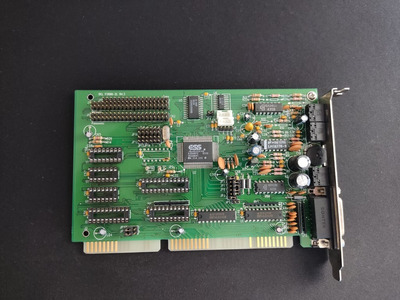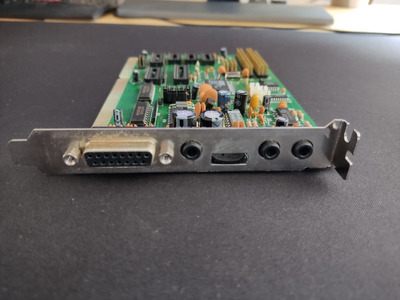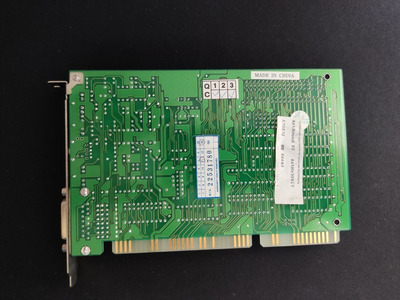ildonaldo wrote on 2022-08-27, 15:03:
It's not the internal settings I am worried about (cause unchanged), but I wouldn't like to fry the internal amplifier of the case by connecting it to the wrong Output.
OK, sorry. When you set "I/O ports", I was immediately thinking about ISA I/O port addresses, that's why I focussed on the wrong topic. I hope this answer is more helpful:
The jack between the the joystick port is speaker out for sure. You can easily identify "speaker out" by the pair of big elecrolytic caps connected directly to the output jack pins and the LM1877 speaker amplifier chip. The capacitors are the DC decoupling caps, and you only need such big caps if a device requiring some power (like headphones or even small unpowered speakers) are connected. This card had no unamplified "line out" jack, as is typical for old PC sound cards with a volume pot.
The jack directly adjacent to the volume pot on the other side is "line in". You can recognize that, because that jack has a stereo wiring: C7/R6 and C6/R12 are identical, one is connected to the right channel, and one is connected to the left channel. This input likely goes directly into the ES688 chip.
The top jack is "microphone input". You can recognize it by not having identically wired left/right channels. Another clue for this channel being "microphone" is the KA3403 chip, which is a simple general-purpose amplifier chip used to boost the microphone signal, which seems to be connected to the signal from this jack.


